Mexican Cartel Tactical Note #32: Ultralight Aircraft and Border Drug Smuggling
Marisa Mendoza and Robert J. Bunker
Key Information: Reporter, “Fatal ultralight aircraft crash highlights latest risky tactic for smuggling drugs into U.S.” Daily Mail. 11 March 2009, http://www.dailymail.co.uk/news/article-1161135/Fatal-ultralight-aircraft-crash-highlights-latest-risky-tactic-smuggling-drugs-US.html:
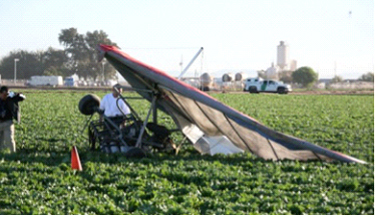
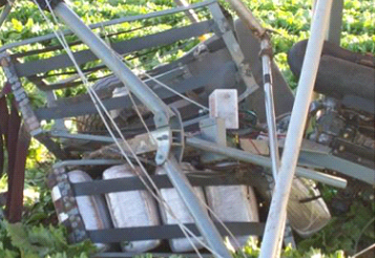
Ultralight crashes in a lettuce field
(Photo: U.S. Border Patrol)
The ultralight aircraft was fitted with a basket for smuggling drugs. It was carrying 141lb of marijuana making it dangerously overweight. The pilot died as a result of the crash.
Key Information: Chris Hawley, “As drug planes get seized, cartels adapt.” AZCentral. 17 March 2010, http://archive.azcentral.com/news/articles/20100316mexico-drug-smugglers-planes.html:
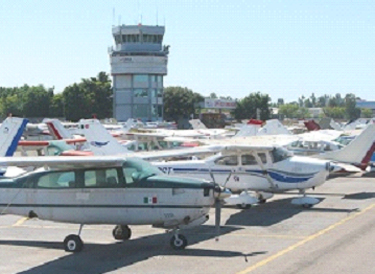
Confiscated planes believed to have been used for drug smuggling in Culiacan, Mexico (Photo: Chris Hawley/The Arizona Republic)
Since 2006, authorities have seized more than 400 drug planes—a fleet bigger than the Mexican air force itself … Smugglers have been adapting their fleets to counter President Felipe Calderon’s 3-year-old crackdown on the drug cartels … Cocaine shipments arrive in Guatemala and are brought into Mexico by land or boat … Small planes then move the drugs northward to avoid the army checkpoints … Drug pilots must land in more-rugged areas because the government has destroyed 2,086 unregistered airfields since 2006. As a result, almost all the seized planes at the Culiacan airport are Cessna 205s, 206s or 210s: single-engine planes that can haul a lot of weight and have high wings ideal for landing on dirt roads or in desert washes … The army has about 100 seized planes at the airport … Many of the aircraft have modified wings so they can take off from short strips, or metal plates attached under the nose to protect the engine from gravel. Some have homemade fuel tanks behind the seats or extra-big tires for landing on rocky terrain … Small planes are used mainly for ferrying drug loads to the Mexican side of the border … smugglers are increasingly transferring shipments to ultralights, simple aircraft made from aluminum tubes and fabric, to actually cross the border. Ultralights are slower and can't carry much fuel, but they are harder to detect on radar than other aircraft and can land and take off on strips of land as short as 100 feet.
The United States has pledged millions of dollars to help Mexico better track drug flights as part of the Merida Initiative anti-drug aid package. It is upgrading Mexico’s Cessna Citation chase planes with better sensors, buying four CASA 235 patrol planes for the Mexican Navy and giving 16 helicopters to the Mexican Army and Federal Police.
Key Information: Buggs, “Ultralight Aircraft Now Ferrying Drugs Across U.S.-Mexico Border.” Borderland Beat. 19 May 2011, http://www.borderlandbeat.com/2011/05/ultralight-aircraft-now-ferrying-drugs.html:

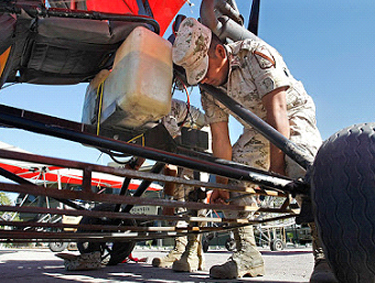
A soldier operates a steel basket beneath a confiscated ultralight aircraft. Smugglers piloting the aircraft would use the basket to drop their contraband without landing
Mexican organized crime groups … are taking to the skies, using ultralight aircraft that resemble motorized hang gliders to drop marijuana bundles in agricultural fields and desert scrub across the Southwest border … What began with a few flights in Arizona in 2008 is now common from Texas to California’s Imperial Valley and, most recently, San Diego, where at least two ultralights suspected of carrying drugs have been detected flying over Interstate 8 … Flying at night with lights out, and zipping back across the border in minutes, ultralight aircraft sightings are rare … Some pilots wear night-vision goggles. Others fly over major roads to orient themselves. Drop zones are illuminated by ground crews using strobe lights or glow sticks.
… Ultralights are customized for smuggling purposes. All-terrain wheels are added for bumpy landings. Second seats are ripped out to add fuel capacity. Drugs are loaded onto metal baskets affixed to the bottom of the framing. From 150 to 250 pounds of marijuana are generally carried, depending on the weight of the pilot. Some ultralights are shrouded in black paint, with even the plastic tarp covers for the marijuana blackened for stealth entries … Flying as low as 500 feet, their small frames are hard to distinguish from trucks. Many appear, then disappear from radar screens. Others never appear at all.
Key Information: Robert Beckhusen, “Feds Drop $100 Million to Spot Flying, Homebrew Cocaine Mules.” Wired. 20 August 2012, https://www.wired.com/2012/08/ultralight/:
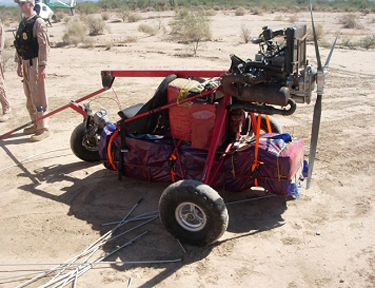
A drug package is attached to the bottom of this weighted down ultralight aircraft
The U.S. Customs and Border Protection is spending $100 million on new sensors that can detect ultralight aircraft. The giant contract … comes as the cartels have been using more of the planes to elude Border Patrol agents … The Air Force has chased them with jets, and the Border Patrol has pursued them with Black Hawk helicopters. Closer to gliders than complete planes; ultralight planes are small, cheap, and their engines are relatively quiet. They move slowly, but are flown low to blend in with the southwest border’s rugged and hilly terrain, which the smugglers use to hide from radar
... The sensors are intended to counter “the high-priority threat presented by small, low-flying aircraft transiting across United States borders.” They should be able to work in hills and mountains, while simultaneously tracking two dozen ultralights from as low as 33 feet above ground level out to a range of 20 kilometers. They need to be built tough to withstand extreme weather conditions and … easily transported across rough terrain.
… The ultralights don’t even have to land ... [they] often fly low, and then drop their dope—in packages that can weigh up to 250 pounds—at a pre-planned location for an awaiting pick-up crew. Even if the government detects the aircraft, the pick-up crew on the ground is likely to be long gone by the time Border Patrol agents arrive … Drug prices are hard to estimate, but using figures from the U.S. Department of Health, a 250-pound load of marijuana could be worth more than $400,000. A similar weight in cocaine, could be worth more than $16 million wholesale. That means absent cocaine, the cartels could make more money on marijuana flights in one year—just using ultralight aircraft—than the government will spend on its efforts to stop them.
Key Information: Attila Nagy, “13 Shockingly Creative Ways Drugs Have Crossed the Border.” Gizmodo. 19 March 2013, http://gizmodo.com/5988877/13-shockingly-creative-ways-drugs-have-crossed-the-border:

This ultralight aircraft was carrying 253 pounds of marijuana when it was captured
(Photo: U.S. Immigration and Customs Enforcement)
Key Information: Reporter, “El Centro Sector Border Patrol Seizes Ultralight Aircraft and $500,000 in Drugs.” The Desert Review. 30 August 2013, http://thedesertreview.com/el-centro-sector-border-patrol-seizes-ultra-light-aircraft-and-500000-in-drugs/:
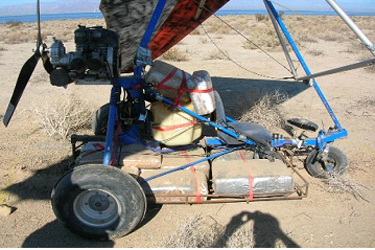
An abandoned ultralight aircraft discovered by El Centro Sector Border Patrol
Border Patrol agents discovered an abandoned ultra-light … [with] packages strapped to the aircraft ... [They] determined that the bundles contained marijuana, weighing 189.4 pounds, with an estimated street value of $151,520, along with 12.7 pounds of methamphetamine with an estimated street value of $406,400.
Key Information: U.S. Immigration and Customs Enforcement (ICE), “Ultralight aircraft carrying marijuana crashes in mountains.” Official Website of the Department of Homeland Security. 20 March 2014, https://www.ice.gov/news/releases/ultralight-aircraft-carrying-marijuana-crashes-mountains:
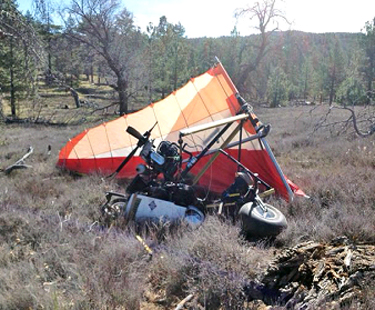
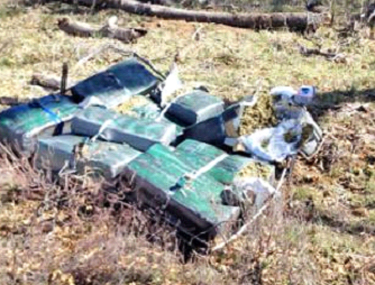
An ultralight aircraft carrying 250 pounds of marijuana crashes in the mountains
(Photo: U.S. Immigration and Customs Enforcement)
A team of federal agents from U.S. Immigration and Customs Enforcement's (ICE) Homeland Security Investigations and U.S. Border Patrol was immediately dispatched to the [crash] site, located at an elevation of approximately 4,000 feet in a remote area of eastern San Diego County … “From all indications, the pilot in this instance escaped relatively unscathed, but that doesn't diminish the serious danger posed by ultralight smuggling activity in general.”
Key Information: Christopher Woody, “‘El Chapo’ Guzman had more airplanes than the largest airline in Mexico.” Business Insider. 4 May 2016, http://www.businessinsider.com/el-chapo-guzman-mexico-drug-trafficking-airplanes-2016-5
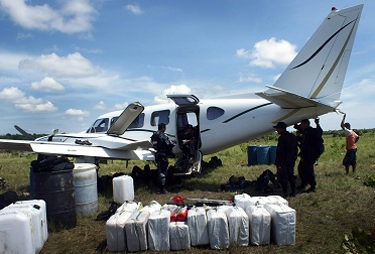
This plane was found holding nearly 1,000 pounds of drugs in Honduras in 2010.
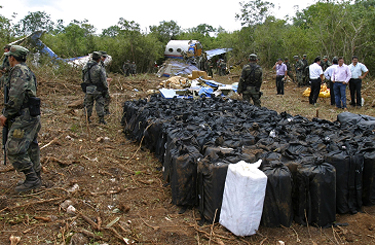
A Gulfstream aircraft stuffed with Colombian cocaine crashed in the jungle of Mexico's Yucatan Peninsula in 2007. There was 3.3 metric tons of cocaine found in the wreckage. (Photo: REUTERS/Stringer)
Sinaloa cartel kingpin Joaquín "El Chapo" Guzmán ran the largest airborne operation in Mexico. Between 2006 and 2015, Mexican authorities seized … 586 planes and 13 helicopters that the cartel used to ship drugs throughout Mexico and Latin America … The largest legitimate airline in the country, Aeroméxico, has 127 planes. If Guzmán's cartel were a legal business … it would likely be one of the most successful in the country, based on its 4,771 clandestine landing strips
… "I went to the military base of the Mexican army in Sinaloa, in Culiacán, and they had more than 100 light aircraft they'd seized from drug traffickers ... At first they had them in the regular airport, and the drug traffickers used to go in and take them back," said journalist Ioan Grillo … The Cessna 206 [was] the most popular version, likely because of its double side doors that allow quick off-loading, kits that allow its gas tank to be expanded, and the plane's ability to take off and land on runways as short as 300 to 400 yards.
Key Information: Geneva Sands and Jack Date, “How Smugglers Attempt to Get Drugs and Other Contraband Over the Border.” ABC News. 21 September 2016, http://abcnews.go.com/US/smugglers-attempt-drugs-contraband-border/story?id=42218894:
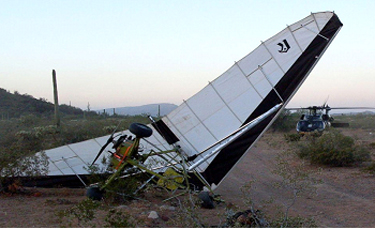
An ultralight aircraft was used to smuggle contraband over the border in July 2011
A couple of hundred pounds of marijuana can be placed in a large basket under the piloted craft and flown over the fence to a predesignated point. The pilot then drops the load for a quick pick-up on the north side of the border and returns to Mexico.
“This method can be dangerous for those on the ground and also for the pilots if the basket doesn't release cleanly, making the ultralight unstable resulting in a crash. These ultralights are also as noisy as a large lawnmower and can be heard by agents on the ground, giving them notice of the incursion.”
Who: Although a number of cartels may be utilizing ultralight aircraft, seizure locations and authority reports most often attribute the use of this technology to the Sinaloa Cartel.
What: Cartels are supplementing primary smuggling methods such as drugs hidden in vehicles, truck trailers, and train cars at formal border crossing points and using burreros (see tactical note #31) and ramp assisted pickup trucks (see tactical note #29) to carry drug loads over the border at unsecured points with a much faster option—manned aircraft known as ultralights.
When: According to a spokesman for U.S. Customs and Border Protection’s air and marine program, the use of ultralights is a revival of a late 1980s and early 1990s trend (Daily Mail, 2009). Drug smuggling by ultralight aircraft began resurfacing in 2008. There were over 228 known ultralight incursions along the U.S.-Mexico border in 2010 alone (Nagy, 2013). The U.S. modified laws to strengthen criminal penalties for the use of ultralights for drug smuggling and began to heavily invest in ultralight detection technology in 2012.
Where: Ultralight crashes and seizures have occurred primarily in the southwestern Arizona communities of Tucson and San Luis; California’s Imperial Valley, specifically the city of El Centro; and at other points along the San Diego border region.
Why: Ultralight aircraft offer a relatively cheap and fast means of transporting up to 250-pound drug loads over the border with little risk of detection by U.S. Border Patrol.
Analysis: With the tightening of the U.S.-Mexico border airspace, the use of light planes by the cartels for drug smuggling purposes has become an increasingly risky proposition. For this reason, ultralight aircraft, which can fly at a low air ground level (AGL)(less than 50 feet above ground) to avoid U.S. radar tracking systems, have been increasingly utilized by the Mexican cartels for about a decade—in particular, by the Sinaloa Cartel.
Ultralights are small, light weight, fixed-wing aircraft manned by a single pilot. They typically have aluminum framing, triangular-shaped wings, and an “open-truss fuselage that gives off a scant radar signature, especially when flying at treetop-level” (Rotstein, 2009). Essentially using a lawn mower with wings, cartels sustain their lucrative operations by transporting heroin, cocaine, methamphetamine, and marijuana while literally flying under radar. Ultralights can be purchased online or constructed at home from kits. A used ultralight can be purchased for around $5,000 while a new model costs twice that amount (Sands & Date, 2016). For cartels, the price pales in comparison to the profits of a single drug load successfully delivered to the United States market.
Under Federal Aviation Administration (FAA) regulations, ultralights should weigh under 254 pounds and only carry five gallons of fuel. They do not require a pilot’s license to operate them. With a top speed of 63 miles per hour, ultralights travel slightly slower than cars on a freeway but, unlike cars, they are not confined to roadways (Atherton, 2013). In the United States, it is illegal to fly ultralights at night but smugglers often fly without lights on them, making the chance of detection very low (Sands & Date, 2016). The sound from an ultralight is minimal and often masked by ambient noise (Atherton, 2013), making it easy for them to quickly cross the border, drop drug shipments, and return to Mexico. Border Patrol has tracked hundreds of these flights, but the pilots are rarely caught (ABC News, 2011).
Still, even with modifications, ultralights are a relatively poor means of transporting large quantities of drugs. Their carrying capacity is limited to a jockey-sized pilot and between 100-250 pound loads. This pales in comparison to a Cessna aircraft that can carry nearly a 1,000-pound load and a Gulfstream aircraft that can carry 3 tons (Woody, 2016). They also cannot travel in strong winds (Atherton, 2013) and become unstable if the release function does not produce a clean drug drop (Sands & Date, 2016). Even with these limitations, however, ultralights still pose a viable low cost, low risk smuggling option for cartels.
Due to their frequent use, Congress passed the Ultralight Aircraft Smuggling Prevention Act of 2012 to update its definition of “aircraft” to include ultralights so that the same penalties can be applied to those caught smuggling drugs using them (Feeran, 2012). Further, their potential threat to national security led U.S. Customs and Border Protection in 2012 to invest $100 million on new sensors that can detect ultralight aircraft (Beckhusen, 2012).
Significance: Innovative Drug Smuggling; Over the Border; Sinaloa Cartel; Ultralight
References
Kelsey Atherton, “5 Crazy Machines Smugglers Use to Get Drugs Across the Border.” Popular Science. 19 April 2013, http://www.popsci.com/technology/article/2013-04/5-crazy-machines-smugglers-use-get-drugs-across-border/?image=0.
Robert Beckhusen, “Feds Drop $100 Million to Spot Flying, Homebrew Cocaine Mules”. Wired. 20 August 2012, https://www.wired.com/2012/08/ultralight/.
Buggs, “Ultralight Aircraft Now Ferrying Drugs Across U.S.-Mexico Border.” Borderland Beat. 19 May 2011, http://www.borderlandbeat.com/2011/05/ultralight-aircraft-now-ferrying-drugs.html.
Robert J. Bunker and Marisa Mendoza, “Mexican Cartel Tactical Note #29: Vehicular Ramps Used to Bypass Border Fencing.” Small Wars Journal. 9 March 2017, http://smallwarsjournal.com/jrnl/art/mexican-cartel-tactical-note-29.
Lee Feeran, “Here’s 100M, Now Catch Those Drug Smuggling Ultralights.” ABC News. 16 August 2012, http://abcnews.go.com/blogs/headlines/2012/08/heres-100m-now-catch-those-drug-smuggling-ultralights/.
Chris Hawley, “As drug planes get seized, cartels adapt.” AZCentral. 17 March 2010, http://archive.azcentral.com/news/articles/20100316mexico-drug-smugglers-planes.html.
Marisa Mendoza and Robert J. Bunker, “Mexican Cartel Tactical Note #31: Use of Burreros to Scale and Lift Up Border Fencing.” Small Wars Journal. 23 March 2017, http://smallwarsjournal.com/jrnl/art/mexican-cartel-tactical-note-31.
Attila Nagy, “13 Shockingly Creative Ways Drugs Have Crossed the Border.” Gizmodo. 19 March 2013, http://gizmodo.com/5988877/13-shockingly-creative-ways-drugs-have-crossed-the-border.
Reporter, “El Centro Sector Border Patrol Seizes Ultralight Aircraft and $500,000 in Drugs.” The Desert Review. 30 August 2013, http://thedesertreview.com/el-centro-sector-border-patrol-seizes-ultra-light-aircraft-and-500000-in-drugs/.
Reporter, “Fatal ultralight aircraft crash highlights latest risky tactic for smuggling drugs into U.S.” Daily Mail. 11 March 2009, http://www.dailymail.co.uk/news/article-1161135/Fatal-ultralight-aircraft-crash-highlights-latest-risky-tactic-smuggling-drugs-US.html.
Reporter, “Ultralight Planes Used to Smuggle Drugs Over Mexico-U.S. Border.” ABC News. 30 April 2011, http://abc7.com/archive/8104321/.
Arthur H. Rotstein, “Drug Smugglers Use Ultralight Aircraft To Cross Border.” ABC News. 11 March 2009, http://www.kvia.com/news/drug-smugglers-use-ultralight-aircraft-to-cross-border/53168182.
Geneva Sands and Jack Date, “How Smugglers Attempt to Get Drugs and Other Contraband Over the Border.” ABC News. 21 September 2016, http://abcnews.go.com/US/smugglers-attempt-drugs-contraband-border/story?id=42218894.
U.S. Immigration and Customs Enforcement (ICE), “Ultralight aircraft carrying marijuana crashes in mountains.” Official Website of the Department of Homeland Security. 20 March 2014, https://www.ice.gov/news/releases/ultralight-aircraft-carrying-marijuana-crashes-mountains.
Christopher Woody, “‘El Chapo’ Guzman had more airplanes than the largest airline in Mexico.” Business Insider. 4 May 2016, http://www.businessinsider.com/el-chapo-guzman-mexico-drug-trafficking-airplanes-2016-5.

